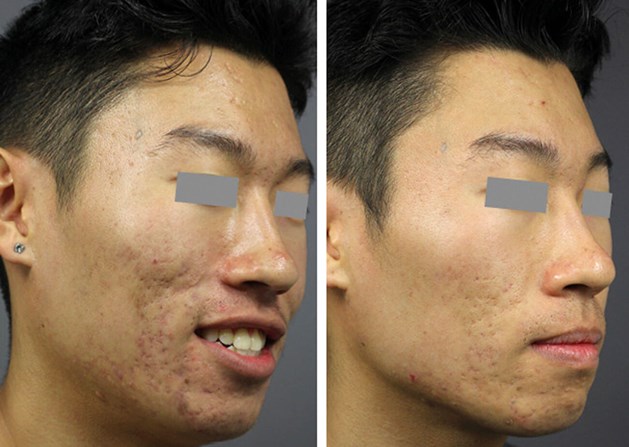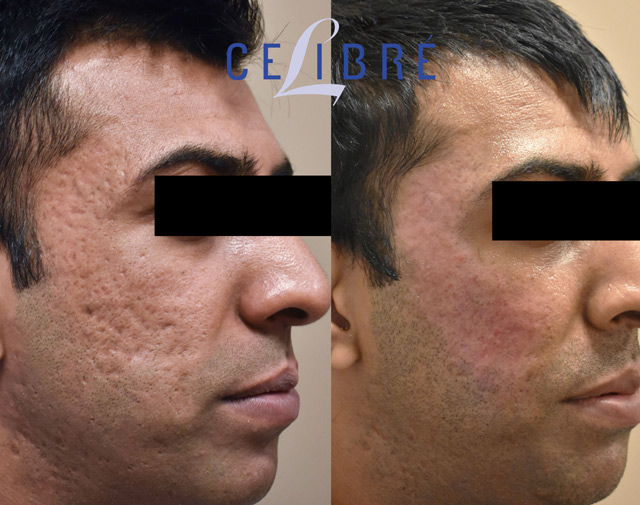Sensitive Skin? Locate the Right Acne Scars Treatment for Your Demands
Sensitive Skin? Locate the Right Acne Scars Treatment for Your Demands
Blog Article
Discovering Skin Disease: Dealing With and identifying Acne Scars for Healthier Skin
Acne scars stand for a substantial problem for people seeking to maintain healthy skin, as they can influence both look and self-confidence. Comprehending the various kinds of marks, from atrophic to hypertrophic, is necessary for establishing suitable treatment alternatives.
Recognizing Acne Scars

The body's all-natural healing process can result in either atrophic marks, which look like depressions in the skin, or hypertrophic scars, which are elevated and arise from overproduction of collagen. Furthermore, the emotional toll of acne marks should not be undervalued; many individuals report feelings of shame, anxiety, and reduced self-confidence. This psychological burden can influence social interactions and overall high quality of life.
Addressing acne scars requires an extensive understanding of their formation and influence. Understanding of the possibility for long-lasting effects linked with untreated scars can motivate people to seek appropriate treatments. Early intervention and effective management techniques can considerably enhance skin appearance and enhance mental durability, highlighting the significance of comprehending the intricacies surrounding acne scars.
Kinds Of Acne Scars
Acne scars can be categorized into distinct kinds, each showing one-of-a-kind features and calling for certain treatment approaches. acne and acne scars treatment. The main types of acne marks consist of atrophic, hypertrophic, and keloid scars

Hypertrophic marks, on the other hand, are increased over the skin level and are the outcome of excessive collagen manufacturing throughout the healing procedure. They usually continue to be within the limits of the initial acne sore. Keloid scars are similar yet extend beyond the initial injury website, forming larger, elevated locations that can be unpleasant or scratchy.
Understanding these sorts of scars is crucial for choosing proper therapy options. Different scars may react far better to specific therapies, such as laser treatments, fillers, or medical treatments, emphasizing the value of a customized approach to acne scar management.
Identifying Your Marks
When assessing the look of your skin, it is vital to precisely identify the kind of scars existing, as this will notify one of the most efficient therapy technique. Acne marks typically drop into two groups: atrophic and hypertrophic marks. Atrophic marks, which are the Read More Here most usual, appear as anxieties or impressions on the skin. These can even more be classified into ice-pick scars, boxcar marks, and rolling marks, each exhibiting unique characteristics and requiring different strategies for assessment.
Hypertrophic marks, on the various other hand, are elevated and take place due to excessive collagen production during the healing procedure. Identifying the specific features of your scars-- such as texture, width, and deepness-- is crucial for appropriate recognition (acne and acne scars treatment). Furthermore, think about the distribution of go scars across your skin, as this can indicate the seriousness and duration of the acne condition
Involving with a skin doctor can give beneficial understandings right into the nature of your scars, aiding in the differentiation between various kinds. A thorough understanding of your marks will inevitably cause a much more tailored and reliable therapy plan, ensuring a more clear and much healthier skin tone.
Treatment Alternatives Readily Available
Determining the particular sort of acne marks existing on your skin prepares for discovering efficient treatment alternatives. Typical kinds of acne marks consist of atrophic (depressed), hypertrophic (elevated), and post-inflammatory erythema.
For atrophic scars, alternatives such as chemical peels, microneedling, and laser resurfacing are commonly made use of. Chemical peels use acids to remove the external layer of skin, promoting brand-new cell growth.
Hypertrophic marks can be treated with corticosteroid injections to flatten the mark or laser therapy to lower inflammation and improve look. Silicone gel sheets and stress dressings may additionally assist in taking care of raised marks.
Furthermore, dermal fillers can momentarily fill up in depressions from atrophic scars, while medical excision may be proper for severe situations. Each therapy option has its factors to consider and benefits, making it important to speak with a skin specialist. They can offer personalized suggestions based upon the kind and severity of your scars, as well as your skin type and general health and wellness.
Tips for Prevention
Effective prevention methods can substantially reduce the likelihood of developing acne scars. The primary official website step is to keep a consistent skincare regimen that consists of mild cleansing, exfoliation, and moisturizing. Utilizing non-comedogenic products assists stop clogged up pores, which can exacerbate acne. Additionally, integrating topical therapies consisting of salicylic acid or benzoyl peroxide can properly minimize and manage breakouts inflammation.
Staying clear of the urge to pop or select acne sores is critical, as this can lead to much deeper skin damages and raise the danger of scarring. Instead, consider using a cool compress or over-the-counter treatments to lower swelling and inflammation.
Sun protection is an additional crucial element of prevention; ultraviolet (UV) rays can dim scars and prevent the recovery process. Applying a broad-spectrum sun block with at least SPF 30 daily can protect the skin and advertise even healing.
Last but not least, preserving a balanced diet regimen abundant in minerals, antioxidants, and vitamins sustains skin health and healing. Remaining moisturized and handling tension levels can likewise play a considerable role in reducing acne flare-ups. By carrying out these methods, individuals can dramatically decrease their opportunities of developing acne marks.
Conclusion
To conclude, understanding and determining acne scars is necessary for effective therapy and achieving healthier skin. Different kinds of acne marks, including hypertrophic and atrophic scars, necessitate specific treatments tailored to individual requirements. Treatment choices variety from chemical peels and microneedling to corticosteroid shots, highlighting the significance of seeking advice from a skin specialist. Furthermore, taking on a mild skincare routine and securing the skin from UV direct exposure can significantly add to the prevention of further scarring and general skin health.
The body's natural recovery process can result in either atrophic scars, which show up as clinical depressions in the skin, or hypertrophic marks, which are increased and result from overflow of collagen. They are additional separated right into three subtypes: ice pick scars, boxcar scars, and rolling marks. Acne scars generally drop into two groups: atrophic and hypertrophic scars. These can additionally be classified into ice-pick marks, boxcar marks, and rolling marks, each displaying distinctive qualities and requiring various strategies for assessment.
Numerous types of acne marks, including atrophic and hypertrophic scars, require specific treatments tailored to specific requirements.
Report this page